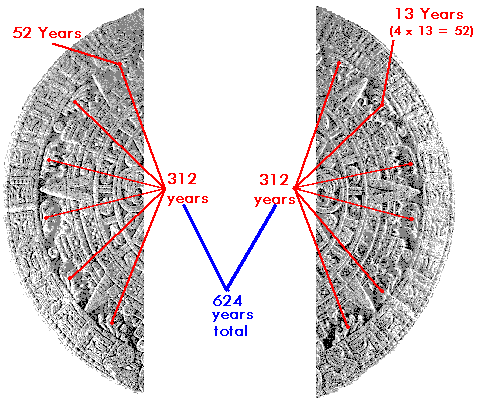THE RING OF FLAMES
Part One
In our analyses, we have emphasized the fact that there may be several ways in which to calculate the constant numbers in relation to the different reckoning systems. In this essay, we shall offer an analysis based on the 52:365c system, with reference, however, to the 65:584c and the 73:260c, in order to show the possibility of translation from one system to another.
On the Ring of Flames, one may observe that there are 12 flames in total, six to either side. In other words, 6 flames correspond to each serpent (xiuhcoatl) on the outer ring of the calendar. The flames are said to adorn the backs of the two serpents, as they appear to be connected thereon.
To each flame there correspond 4 straight bars, which have been identified as being representative of the old fires, whereas the flowing part of the flames represents the new fire.
 |
In terms of constant numbers, then, there are 12 flames in total; six to a side. And, there are 24 straight bars to a side; 48 in total on the ring. detail
The most obvious consideration is to assign a value of 52 (years) to each flame; whereby each straight bar would equal 13 (years). In this case, six flames would equal 312 years (365c), with the total ring of 12 flames equaling then 624 years.
 |
If the assigned value to the entire ring of flames represents then 624 years (365c), one could then ask how many calendar rounds (to modify that expression) would exist within the 26,000 years of the Sun's Great Cycle?
Part Two